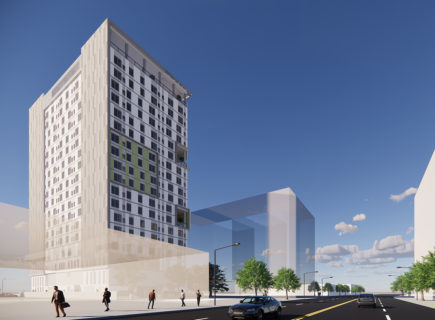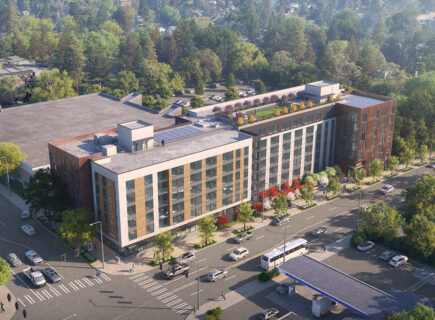Workforce housing and affordable housing architects AXIS/GFA offer industry commentary on multi-family housing affordability following the ULI Housing Opportunity Conference.

Earlier this month, AXIS/GFA Founding Principal and Seattle Studio Director Radim Blazej attend the 2024 Urban Land Institute’s Housing Opportunity Conference. An annual event hosted by ULI and the Terwilliger Center for Housing, the conference examines factors contributing to the housing affordability crisis, and explores best practices in residential development and public policy to support the construction of affordable housing across America.
This year, one factor dominated the discussion: interest rates. With rates continuing to hover around 6%, both buyers and developers are facing affordability challenges of their own. For homebuyers, higher rates make overall ownership more expensive, which indirectly places pressure on rental demand, ultimately increasing housing costs for everyone. For developers, rates contribute to the prohibitive cost of borrowing and building – a situation that further limits new home stock, and ultimately increases prices with decreasing inventory.
So, what can a multi-family residential architect do to assist in this situation? Radim offers these insights informed by his participation in this year’s conference.

AXIS/GFA Founding Principal Architect Radim Blazej at the 2024 ULI Housing Opportunity Conference.
“Increase density.”
“Simply put, more housing stock is needed. Denser multi-family communities are the fastest and most cost efficient way to bring more stock online. For buyers, increased density means reduced price pressure; for developers, denser developments are more cost efficient to build, and ultimately more tempting to undertake. As architects, finding opportunities to increase unit-count in our multi-family projects means bringing more housing to market, and increased potential for developers.”
“Design homes for the changing demographics.”
“Millennials will soon become the largest segment of homebuyers in the market. They’re also the most likely to live with over 3.0 people per residence, yet are the most likely to purchase homes with 2 bedrooms or fewer on account of affordability. As architects, our challenge is to embrace designing homes that can affordably flex and accommodate Millennials’ changing needs and budgets.”
“Embrace transit proximity and walkable neighborhoods.”
“It’s a proven approach: focusing dense housing in the proximity of mass transit or the downtown core, and supporting it with zoning code adjustments, is a recipe for creating affordable urban housing. The City of Austin’s success applying this approach to mitigate their recent population boom is a perfect example. Reducing the dependability on cars and creating quality public spaces allows developers to reduce their cost-per-unit, and at the same time creates more commercial base and amenities for the city.”
“Simplify the permit process and reduce required mandates.”
“As a West Coast architect, I could only look enviously how much shorter the permitting and development approval process is in Austin. Encouragingly, both Washington and California legislatures are pushing local jurisdictions to simplify and expedite the permitting process – a step in the right direction. Not only do permitting delays result in increased time costs, consultant fees, and carrying costs, but there is also an opportunity cost and increased development risk – this directly decreases the affordability of future housing.”
“Design homes with construction affordability in mind.”
“Ultimately, the more cost-efficiently multi-family residences can be constructed, the more affordable they will be to purchase, and the more willing developers will be to build them. Affordability starts with the architectural design – but this doesn’t mean designing uninspiring buildings and specifying budget materials. It means finding ways to maximize the potential of every aspect of every community we design – from optimal usage of space, choosing energy efficient mechanical, down to assisting developers access tax credits and bylaw variances for increased density. Our challenge is to make every dollar count.”
This article appeared in the January/February 2024 edition of The Praxis newsletter.


